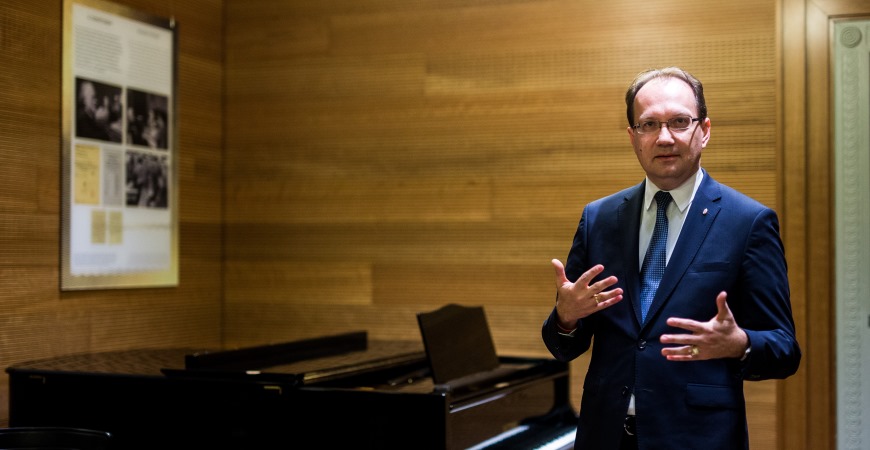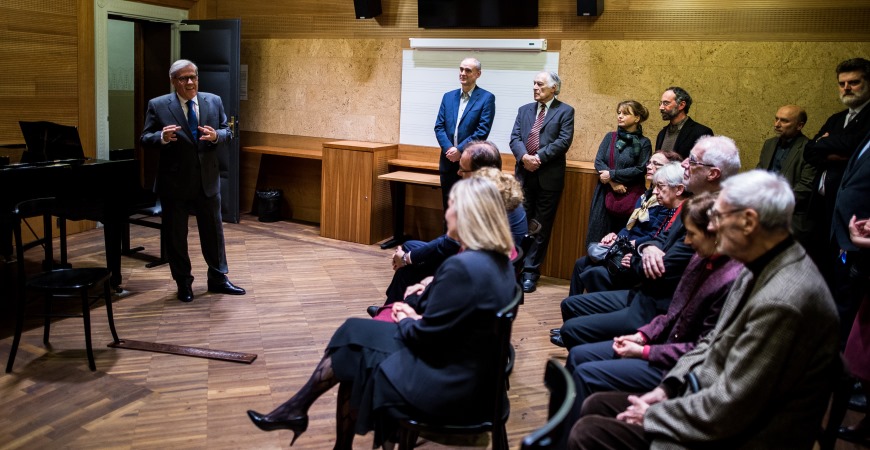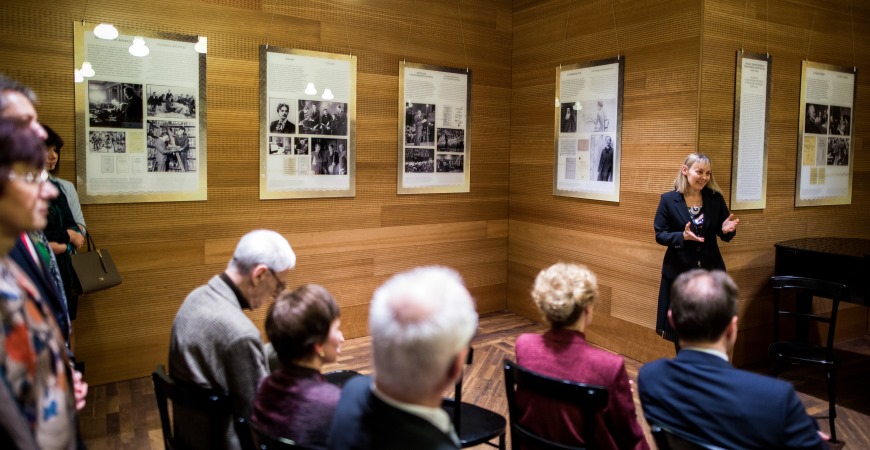Kodály Room inaugurated at the Liszt Academy
To commemorate the 50th anniversary of the Zoltán Kodály’s death, on 5 March, Kodály’s favourite room at the Liszt Academy was officially inaugurated receiving the composer’s name. Hungary’s Secretary of State for Culture, Dr Péter Hoppál, the President of the Liszt Academy, Dr Andrea Vigh and the curator of the exhibition and professor of the Liszt Academy András Batta delivered their addresses at the inauguration ceremony and related exhibition opening.

Photo: Liszt Academy / Gábor Ancsin
Kodály was member of the academic staff of the Liszt Academy from 1907 for nearly 50 years: he taught composition, orchestration, Hungarian folk music, orchestral score reading, solfege and music theory. He acted in multiple functions: as vice-director (1919/20), as chairman of the directorial board (1945/46), honorary president (from 1956). The Kodály School was founded during his activity as an educator, and its staff members, as Kodály’s co-workers, became torchbearers for the Singing Youth Movement as composers, musicologists, educators and conductors and as such, the most significant figures of Hungarian music from the 1930s onwards.
Kodály’s steady teaching room at the Liszt Academy was Room XV, which is also considered the cradle of the Musicology Department, where generations of musicology, music theory and composition students have been the heirs of Kodály’s legacy up until today.

Photo: Liszt Academy / Gábor Ancsin
The Kodály Room was inaugurated on 5 March, 2017 on the 50th anniversary of the musical giant’s death. Six tableaux witnessing Kodály’s relationship with the Liszt Academy will be enriching the walls of this historic room. Among the attendees of the inauguration ceremony were the widow of Zoltán Kodály, Sarolta Péczely, the directors of the Liszt Ferenc Academy of Music and numerous researchers of the Institute for Musicology of the Research Centre for the Humanities, Hungarian Academy of Sciences.

Photo: Liszt Academy / Gábor Ancsin
Dr Andrea Vigh gave her welcome speech, which was followed by the exhibition’s curator Prof András Batta delivering a commemorative account of Kodály’s life and work. The Secretary of State Dr. Péter Hoppál stated in his address that the Ministry of Human Resources in collaboration with Hungarian cultural institutions is planning to organise a long-term Kodály Programme comprising concerts, festivals, and possibly competitions, lectures and masterclasses. The ceremony was closed with Kodály’s Sonatina for Cello and Piano performed by Gergely Devich and Mária Kovalszki.


